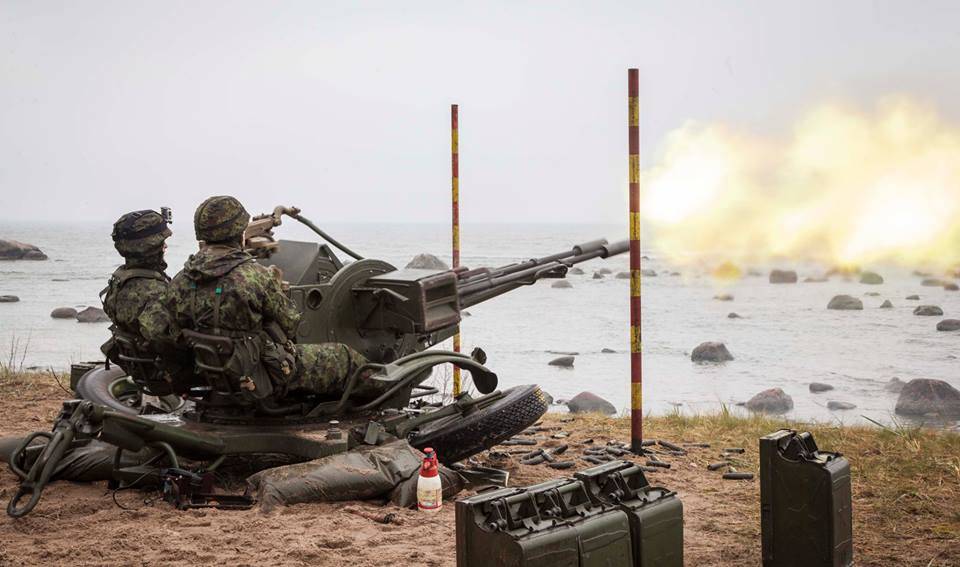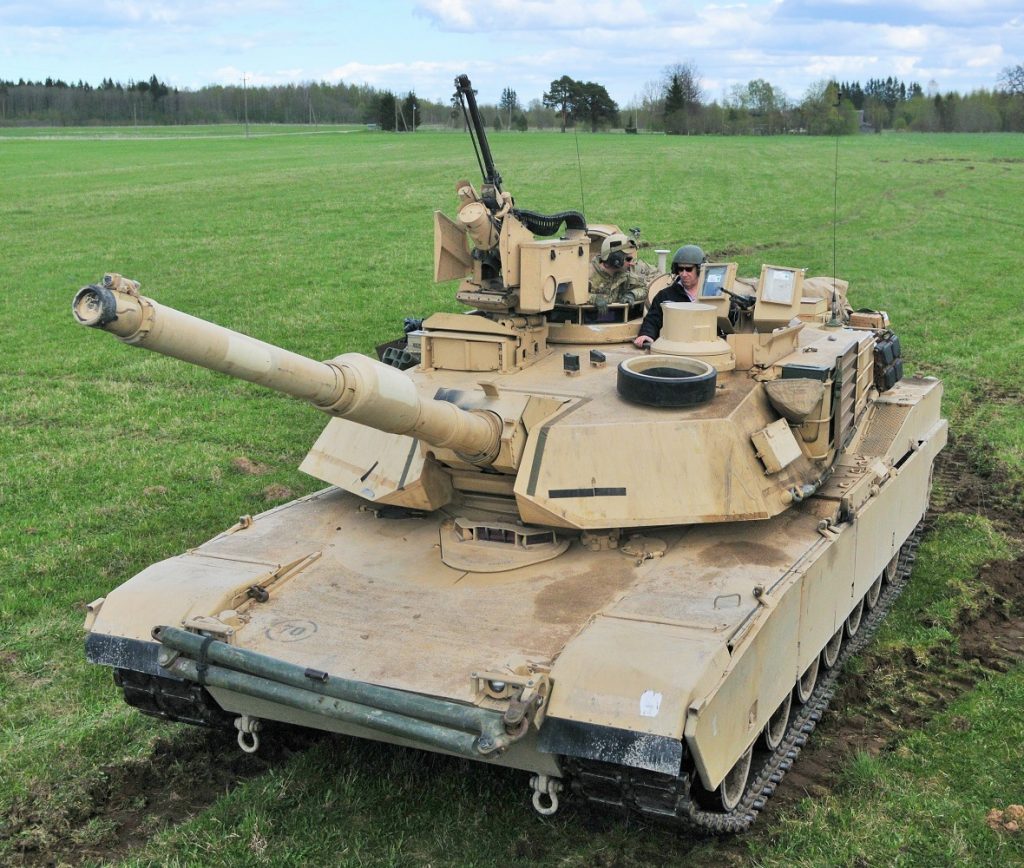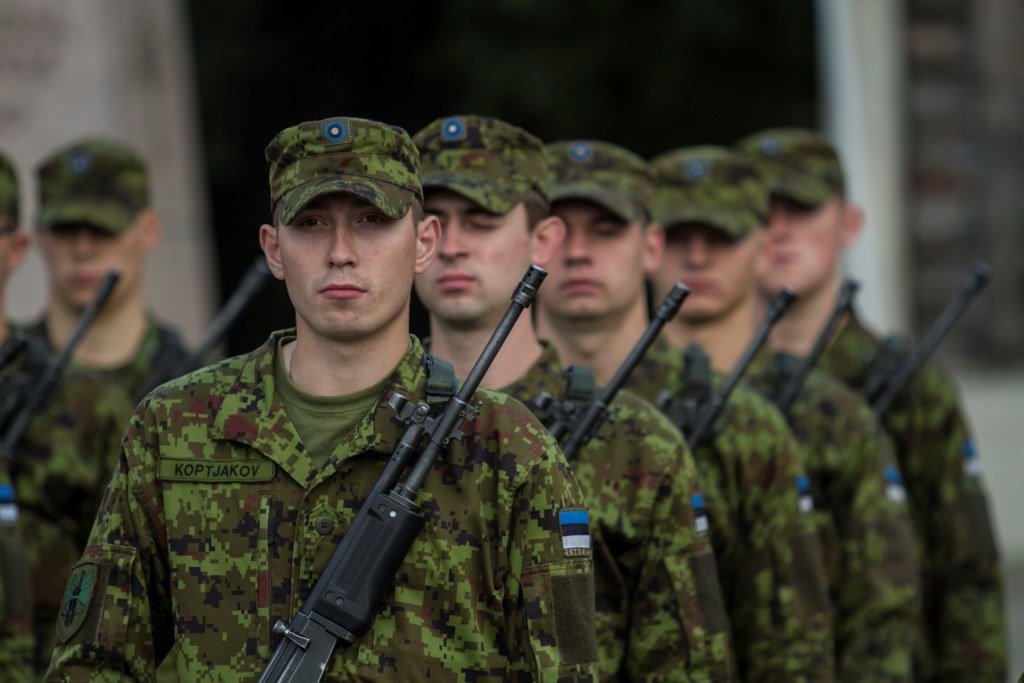The Jamestown Foundation, a US-based institute for research and analysis, recommends the Baltic states introduce a two-year conscription to better defend themselves, among other suggestions.
A recent research paper, titled “How to Defend the Baltic States”, written by Dr Richard D. Hooker, Jr, a Distinguished Senior Fellow at The Jamestown Foundation and a university professor, notes that to defend the Baltic states better, Estonia, Latvia and Lithuania should adopt a two-year conscription with fair compensation for those who choose to become career soldiers and officers, as this “would yield an order of magnitude improvement in size and quality and provide the basis for expanding Baltic ground forces at lower cost than expensive professional soldiers”.
The report notes that stronger NATO ground forces in the Baltics do not seem politically feasible for now. “The remaining option is to rely on host nation solutions. This approach will require significant security assistance to the Baltic States and strong support from key allies, but the Balts themselves must first step up. Although small in population and GDP, they are capable of much more than they are doing now,” the research paper says.
The report points out that with a combined population of some six million, “only 22,000 citizens are under arms. Most are contract soldiers who serve short tours of duty, although Lithuania has recently reintroduced nine-month limited conscription. Thirty thousand indifferently trained and equipped reservists are also on the books. In comparison, with a similar-sized population, Finland fielded some 300,000 troops in the 1939 Winter War. Tiny Latvia fielded a 70,000-man army during its War of Independence in 1919. The Estonian army at the same time fielded 80,000. Today, Israel, a state with an equivalent population, fields an active army of 176,000 with another 465,000 upon full mobilization.”
Division headquarters should be commanded by officers trained in the US
The report does fail to mention that Estonia, too, has nine-to-eleven-month conscription; however, it is relatively small – the entire personnel of the Estonian Defence Forces consists of 6,600 people, including 3,300 conscripts. There’s an additional force of 15,800 in the Estonian Defence League, and the country also has 60,000 reserve personnel.
The Jamestown research paper continues to say that a reasonable goal is for Estonia and Latvia “to expand from a light brigade to a small heavy division commanded by a major general and composed of a headquarters, two maneuver brigades, and enablers such as a general support field artillery battalion and air defense, engineer, logistics and signal battalions—about 10,000 soldiers”.

“Division headquarters should be commanded and staffed by Baltic officers, trained in the US, with NATO advisors and augmentees. At least one brigade in each division should be a ‘heavy’ or mechanized formation consisting of one tank and two mechanized battalions. … Each brigade should include a direct support field artillery battalion (ideally self-propelled 155 mm howitzers), air-defense battery, engineer company, logistics company and signals company and be commanded by a brigadier. A general support 155 mm artillery battalion should be provided at division level, with one corps-level Multiple Launch Rocket System (MLRS) battalion.”
“Maneuver units should be liberally supplied with Javelin fire-and-forget anti-tank and Stinger air-defense systems. Reserves should be organized to provide combat replacements (recently discharged soldiers are best for this task) as well as territorial defense units to secure critical infrastructure.”
The countries should stockpile food and medical supplies
The author of the report, Dr Hooker, also says that these steps would go far to improve the ability of the Baltic states to defend themselves, but more is required.
“Like West Germany during the Cold War, the Baltic States should organize their national territories for defense. This means pre-chambering key bridges for demolition, stockpiling munitions and developing plans to emplace minefields in key locations in accordance with a national obstacle plan, hardening command posts and logistics storage areas, constructing field fortifications and preparing anti-tank obstacles along avenues of approach.”

“Civil defense preparations, such as stockpiling food and medical supplies, potable water, oil and natural gas, will be needed (the Baltic States are heavily dependent on Russian energy imports). Such measures need not unduly disrupt civilian life, but they will go far to enhance deterrence and defense.”
The report admits, though that while the Baltic States can field larger forces demographically, they will need help financially.
Excess US equipment should be refurbished and transferred to the Baltics
The European Deterrence Initiative “provides a ready funding source, along with some security assistance from wealthier allies like Germany. There are other innovative ways to help as well. For example, the US Army maintains a large stockpile of excess equipment, including M1A1 tanks, M2 Bradley Fighting Vehicles and many other items, in storage.”
“With minor refurbishment (funded through EDI), some can be returned to full operational status and transferred to the Baltic States as excess defense articles, as was recently done when 162 M1A1 tanks were gifted to Morocco. For the first few years, US contract advisors can be provided to train new crews on maintenance and operations. Sustained finding would be required to ensure a regular pipeline of spare parts and ammunition,” the report continues.

The Jamestown report covers a wide array of assessments and facts regarding the defence of Estonia, Latvia and Lithuania, including threat assessments and strategic imperatives. In the introduction of the research paper, the foundation notes that for “Russian President Vladimir Putin, the prize is tempting: an opportunity, at low risk, to seize NATO territory and fracture the Alliance. As an urgent priority, Washington, as leader of NATO, should take on defense of the Baltics as a critical priority. Indeed, without effective defense, there can be no effective deterrence.”
The author of the paper, Dr Richard D Hooker, Jr, is a Distinguished Senior Fellow at The Jamestown Foundation. A university professor, he holds the Theodore Roosevelt Chair in National Security Affairs at the National Defense University. He is a member of the Council on Foreign Relations, the International Institute of Strategic Studies and the Foreign Policy Research Institute.
The Jamestown Foundation is a Washington, DC-based institute for research and analysis, founded in 1984 as a platform to support Soviet defectors. Today its stated mission is to inform and educate policy makers about events and trends, which it regards as being of current strategic importance to the United States. Jamestown publishes numerous publications that focus on China, Russia, Eurasia, and global terrorism.
Cover: Conscripts in the Estonian Defence Forces (the image is illustrative).

